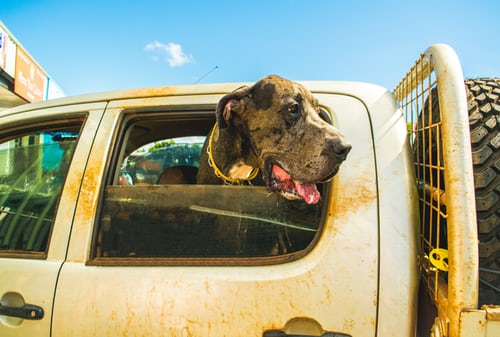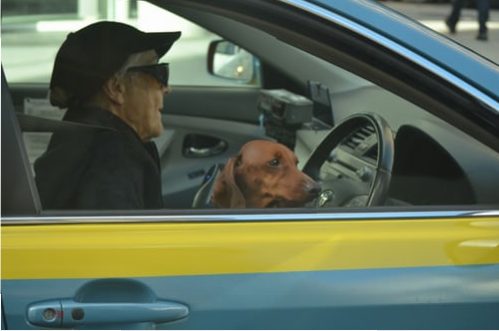Pets have become part of the family, so when you travel by car, often they will too. Here’s how to travel with pets, safe for them, safe for you.
IT PROBABLY ISN’T SOMETHING top of mind when you’re buying a new car, but family pets will occasionally, or often, be travelling with you, so it’s worth taking their needs and safety into consideration. And since an unrestrained dog can become a lethal weapon in a crash, it affects the safety of you and your family as well (at 60km/h an unrestrained 20kg dog being thrown onto you has the same impact as if it had fallen from a third-floor balcony).
Nearly six in 10 people said they had driven with their dog in the automobile at least once a month in the past year. As thousands of consumers checked out the latest automobiles at the New York International Auto Show on National Pet Day, they learnt how to make life easier for themselves and their pets by taking a closer look at what works best for their four-legged friend.

Do your homework and make note of your specific pet’s needs (and your own). Take into consideration space, special safety features and convenience.
Here are a few tips to keep in mind for finding a pet-friendly vehicle:
- Safety features. According to the 2011 AAA/Kurgo) study (US figures), three out of 10 pet owners admit to being distracted while driving. One in five admits to driving with a pet in their lap – one of the more stupid decisions and in various states in Australia, illegal. In Victoria and South Australia, hefty fines apply if dogs travelling on the back of utes are not restrained. In New South Wales, drivers could face hefty fines and jail sentence if a dog is injured as a result of being unrestrained. In Western Australia and New South Wales, it is illegal for a dog or other pet to travel on the lap of the driver. For more information, we recommend visiting your local road safety authority’s website. Lane-departure warning systems, stability and traction control and forward-collision alerts help heighten driver alertness to possible danger. Owners can reduce distractions and stay on the right side of the law by keeping pets restrained in the back seat or in a pet carrier.
- Exterior and interior features. Look for vehicles that are wide, tall and slightly square at the back. This will make it easier to get pets and pet equipment into and out of vehicles. Cargo room and additional cup holders are useful to stow pet food, water and accessories. Flexible and fold-flat seating can also make life easier, and a rear cooling system will make your pet’s life more comfortable on a summer’s day.
- In-vehicle technology. Power tailgates make it easier for pets to access the vehicle. Fold-flat seats offer more space for transporting pets and crates. Additional safety and security technology such as remote unlock, vehicle location and crash-detection services can provide live help at a touch of a button during pet-emergency situations.
- Fuel efficiency. Fuel-saving vehicles can save money, leaving more to spend for pet treats and toys. And driving a fuel-efficient, low emission vehicle is good for both your pet and the environment.
And it should go without saying never, but never leave your pet (or child, for that matter) in an unattended car, even when the temperature doesn’t seem extreme. The inside of a motor vehicle can heat up to extraordinary temperatures, and your pet isn’t able to open a window or door to get out of the heat.

There are various types of restraint, and which one best suits you and your pet depends on the type of car you drive and the size, shape and temperament of your dog.
- Harness: swivel type attachment systems which anchor to the existing seat belt and attach to a dog harness (not the collar). To be effective, the harness must be correctly fitted and the anchor secure.
- Pet transport crates: for complete safety, crates must be secured to your vehicle and be large enough for the pet to stand up, lie down and turn around.
- Cargo barriers: these are ideal for station wagons and SUVs. They can be purchased to suit your make and model of vehicle or you can purchase adjustable barriers which are easily installed and removed. If the cargo area is large, you should use a harness as well.
